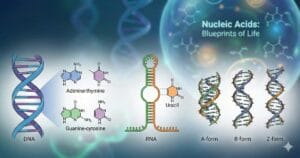
COMPETITIVE EXAM MCQs SERIES of ENVIRONMENTAL SCIENCE for UGC-NET/JRF, SLET, ARS, GATE, and other entrance tests – Contemporary Environmental Issues: International Efforts for Environmental Protection.
Syllabus Outline
- Global environmental awareness and historical milestones (e.g. Stockholm Conference, Earth Summits, global environmental governance).
- Key international environmental treaties and agreements (e.g. Convention on Biological Diversity, United Nations Framework Convention on Climate Change, Kyoto Protocol, Paris Agreement, Ramsar Convention, Montreal Protocol, Basel Convention).
- Role of international organisations (e.g. United Nations Environment Programme, Intergovernmental Panel on Climate Change, Global Environment Facility, World Bank).
- United Nations Sustainable Development Goals and Agenda 2030
- International environmental declarations and policy frameworks (e.g. Rio Declaration, Agenda 21, Johannesburg Plan of Implementation).
- Global cooperation on transboundary environmental issues.
- International mechanisms for climate mitigation and finance (e.g. Carbon markets, Clean Development Mechanism, Technology transfer, Loss and Damage Fund).
- Role of global non-governmental organisations and environmental movements (e.g. Greenpeace, World Wide Fund for Nature, Friends of the Earth)
This quiz contains concept-based, most frequently asked 25 MCQs of “Contemporary Environmental Issues: International Efforts for Environmental Protection”. Each question has a single correct/most appropriate answer.
*****
1. Which of the following treaties is correctly matched with its focus?
A) Kyoto Protocol – Renewable energy technology transfer
B) CITES – Endangered species trade regulation
C) Montreal Protocol – Global trade agreements
D) Ramsar Convention – Industrial pollution standards
2. Which of the following statements is correct?
I – The Kyoto Protocol was the first climate treaty with binding GHG targets for developed countries.
II – The Montreal Protocol was successfully amended in Kigali (2016) to phase down HFCs.
III – The Convention on Biological Diversity (CBD) came out of the Rio Earth Summit (1992).
A) I, II and III
B) I and II only
C) II and III only
D) I and III only
3. The 1972 Stockholm Declaration on the Human Environment comprised how many principles?
A) 21
B) 26
C) 27
D) 30
4. “Agenda 21,” adopted at the 1992 Rio Summit, is best described as:
A) A legally binding treaty on climate change
B) A non-binding global action plan for sustainable development
C) A plan for global trade regulations
D) A financial mechanism for environmental projects
5. Under the Kyoto Protocol, which group of countries had legally binding greenhouse gas reduction targets?
A) All UN member countries
B) Only Annexe I countries
C) Only Annexe II countries
D) Only countries in the European Union
6. Which of the following are market-based mechanisms under the Kyoto Protocol?
I – Clean Development Mechanism (CDM)
II – Joint Implementation (JI)
III – Global Environment Facility (GEF)
IV – International Emissions Trading
A) I and III only
B) I, II, and IV
C) II and IV only
D) III and IV only
7. Which protocol was adopted to phase out ozone-depleting substances and is the first international treaty to achieve universal ratification?
A) Kyoto Protocol
B) Montreal Protocol
C) Basel Convention
D) Ramsar Convention
8. The Ramsar Convention, adopted in 1971, is concerned with:
A) Climate change mitigation
B) Conservation of wetlands
C) Protection of endangered species
D) Sustainable forestry
9. The Basel Convention deals primarily with:
A) Hazardous waste management and transboundary movement
B) Global water scarcity
C) Ozone layer protection
D) Nuclear disarmament
10. Which country is not a party to the Convention on Biological Diversity?
A) United States
B) India
C) China
D) Brazil
11. The Global Environment Facility (GEF) serves as the financial mechanism for which of the following conventions?
I – Convention on Biological Diversity (CBD)
II – UN Framework Convention on Climate Change (UNFCCC)
III – Rio Declaration on Environment and Development
IV – UN Convention to Combat Desertification (UNCCD)
A) I and III only
B) I, II, and IV
C) II and III only
D) I, II, III, and IV
12. The 2030 Agenda for Sustainable Development (with 17 SDGs) was adopted in which year?
A) 2000
B) 2012
C) 2015
D) 2018
13. SDG 14 is specifically concerned with:
A) Climate action
B) Life below water
C) Life on land
D) Affordable clean energy
14. The “common but differentiated responsibilities” principle was formally introduced in which declaration?
A) Stockholm Declaration (1972)
B) Rio Declaration (1992)
C) Paris Agreement (2015)
D) Kyoto Protocol (1997)
15. Assertion (A): The Ramsar Convention is the first international environmental treaty to achieve universal ratification.
Reason (R): It has 197 Parties (nearly all UN members).
A) Both A and R are true, and R correctly explains A.
B) Both A and R are true, but R does not explain A.
C) Both A and R are false.
D) A is true, R is false.
16. Assertion (A): The “polluter pays” principle is included in the Rio Declaration.
Reason (R): The Rio Declaration states that “the polluter should, in principle, bear the cost of pollution.”
A) Both A and R are true, and R correctly explains A.
B) Both A and R are true, but R does not explain A.
C) A is true, R is false.
D) A is false, R is true.
17. Assertion (A): Only developed (Annexe I) countries had binding emissions targets under the Kyoto Protocol.
Reason (R): The Kyoto Protocol was based on the principle of common but differentiated responsibilities.
A) Both A and R are true, and R correctly explains A.
B) Both A and R are true, but R does not explain A.
C) A is true, R is false.
D) A is false, R is true.
18. Under the Paris Agreement, countries submit “Nationally Determined Contributions” (NDCs). These NDCs are:
A) Legally binding emissions targets for each country
B) Voluntary national climate action plans to be updated regularly
C) Binding financial contributions to the UN
D) Technology transfer obligations for developing countries
19. COP28 (Dubai 2023) was notable for being the first COP outcome to explicitly include:
A) A legally binding emissions cap for all countries
B) A commitment to phase down fossil fuels
C) A requirement to meet 1990 temperature levels
D) A requirement to globalise fossil fuel extractions
20. Which convention addresses transboundary movements of hazardous wastes?
A) Ramsar Convention
B) Basel Convention
C) Kyoto Protocol
D) Paris Agreement
21. Which principle from the Rio Declaration embodies the idea that developing countries may be exempt from certain environmental obligations due to limited capacity?
A) Precautionary Principle
B) Polluter Pays Principle
C) Principle of Intergovernmental Equity
D) None of the above
22. World Environment Day 2026 will focus on which environmental challenge?
A) Climate Change
B) Plastic Pollution
C) E-waste
D) Wildlife
23. Which of the following is an example of an international mechanism for technology transfer in climate change?
A) Clean Development Mechanism
B) Climate Technology Centre and Network under UNFCCC
C) Loss and Damage Fund
D) Global Development Banks
24. Which statement about the World Meteorological Organisation is correct?
A) It is an NGO advocating for renewable energy.
B) It co-founded the IPCC with UNEP to assess climate science
C) It manages the Green Climate Fund.
D) It oversees the Basel Convention.
25. Which of the following is included in the Kyoto Protocol’s flexibility mechanisms?
I – Clean Development Mechanism
II – Emissions Trading Mechanism
III – Joint Implementation Mechanism
IV – Non-binding Mechanism
A) I only
B) Both I and II
C) I, II and III
D) I, II, III and IV
*****
Previous: India’s National Action Plan on Climate Change
Next: Environmental Issues of Water Resource Projects
References
- R. Rajagopalan (2015) ENVIRONMENTAL STUDIES: FROM CRISIS TO CURE, Oxford University Press, Third edition
- Bharucha, E. (2013). Textbook of Environmental Studies. Universities Press, 3rd edition
- Abha Vashistha and Surabhi Johari (2020). Contemporary Environmental Issues and Challenges, Bloomsbury Prime
- William Cunningham and Mary Cunningham (2009). Environmental Science: A Global Concern, McGraw-Hill Education, 11th edition

